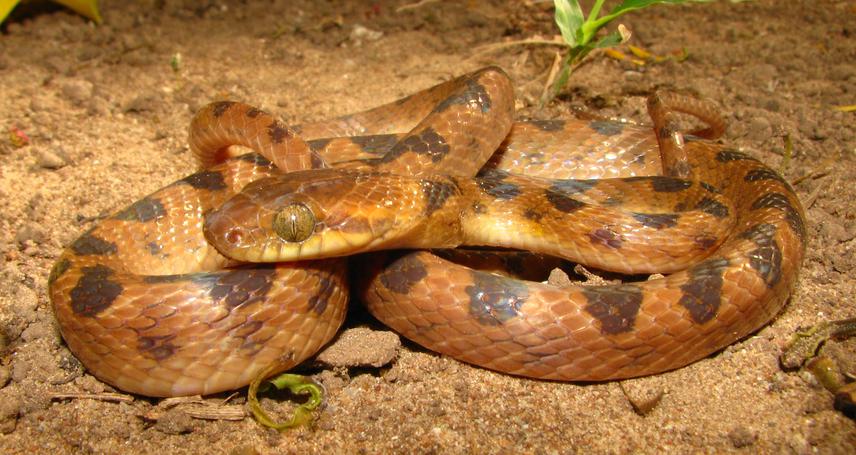Juan E Carvajal C
The aim is to assess the direct and indirect effects of human communities on the diversity of reptiles in the department of Cesar, Colombian Caribbean region.
The project has two different complementary focuses. The first one purely biological and the other one with a social focus (working with human communities). This two different focuses are justified in the fact that the reptile fauna (tortoises, lizards and snakes) suffers from direct and indirect pressures by the human communities. Among the direct pressures we find different uses, like hunting, harvesting, as bushmeat, pets and indiscriminate killing due to cultural misperceptions, mainly snakes.

Leptodeira annulata. © Alejandro Cabrejo-Bello
Habitat loss, fragmentation, landscape degradation and edge effect over composition and distribution of reptiles in six fragments of tropical dry forest in the Colombian Caribbean Region, department of Cesar will be evaluated. To achieve the participation of local communities in the investigation and learn about the cultural implications (use, threats and perception) that they have about forest and associate fauna will be developed workshops. The Cesar Department (study area) is one of a few zones on the Colombian Caribbean area that still has fragments of seasonal dry forest of good size. These kinds of forests are critically endangered due to changes in the land use and are now being used for agriculture and livestock. Particularly, the Cesar Department during the last years has had a boom in land use change mainly for the establishment of plantations of exotic species such as oil palm (Elaeis guiinensis).
Taking into account the direct and indirect anthropogenic factors on reptiles and their habitats it would be produced a plan with proposals that promote their conservation and the environmental sustainability of their habitats. In the action plan it will be contemplated all the activities established in the programs and projects that allow the plan to work efficiently and coherent with the objectives contemplated in the study areas and allowing the social and economic development of the local communities. Once we characterized the biological aspects and have analysed the interactions between fauna and local people inhabiting near its habitats, and also the state ´estates that are present in the area we would propose programs and projects to address the problems of the reptile fauna and the area and to guarantee environmental, economical and social sustainability of the activities developed there, after the approval of the plan.